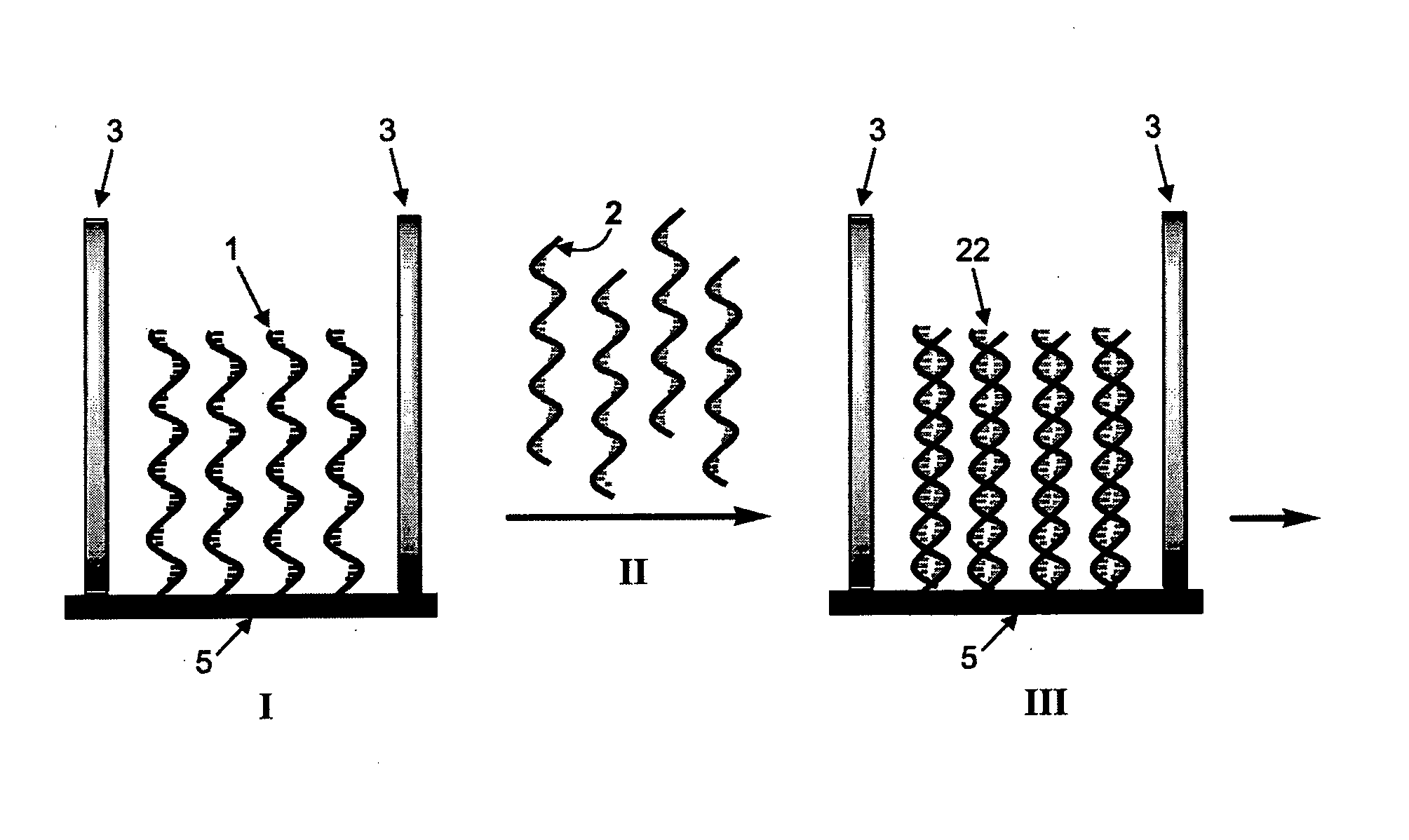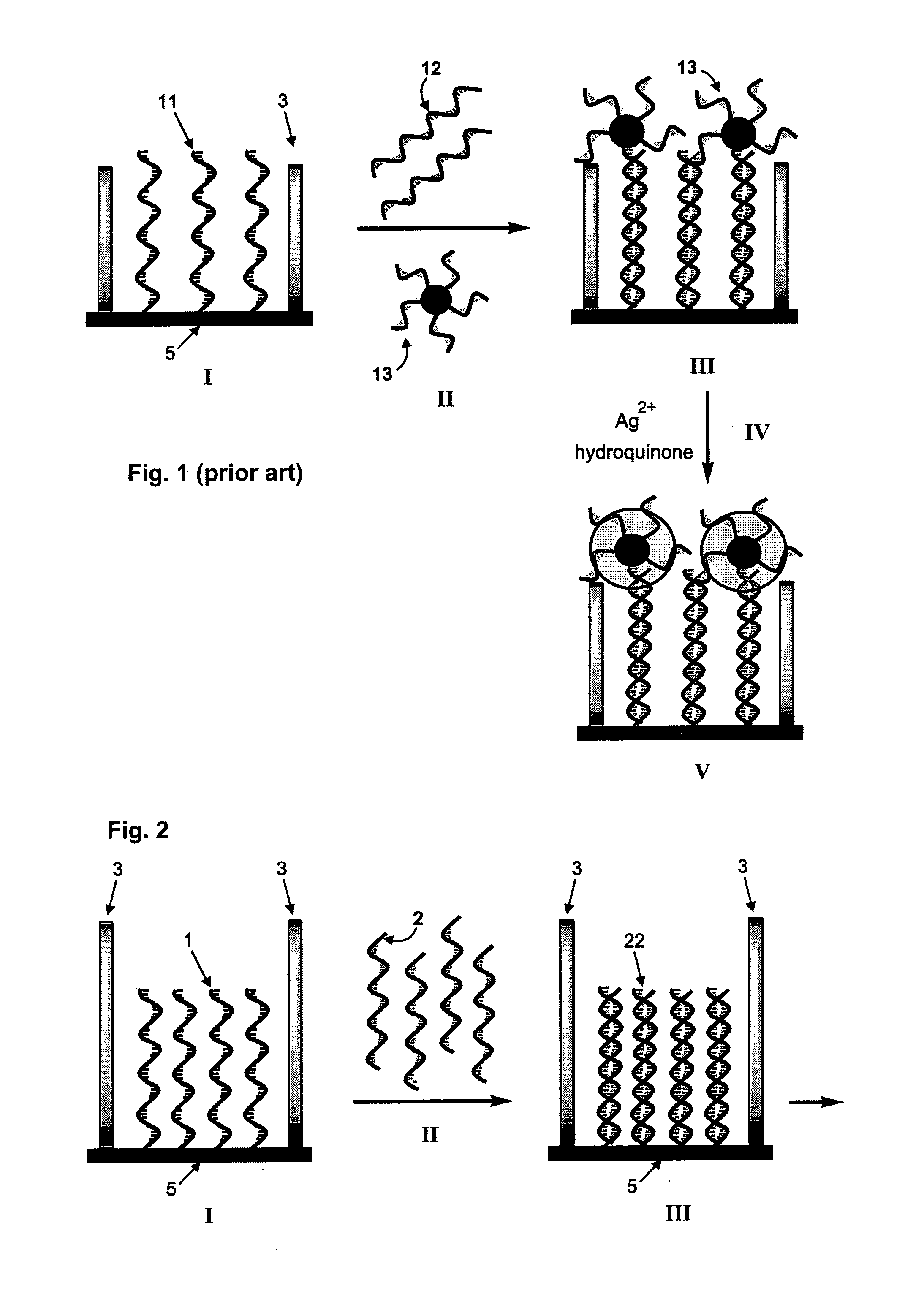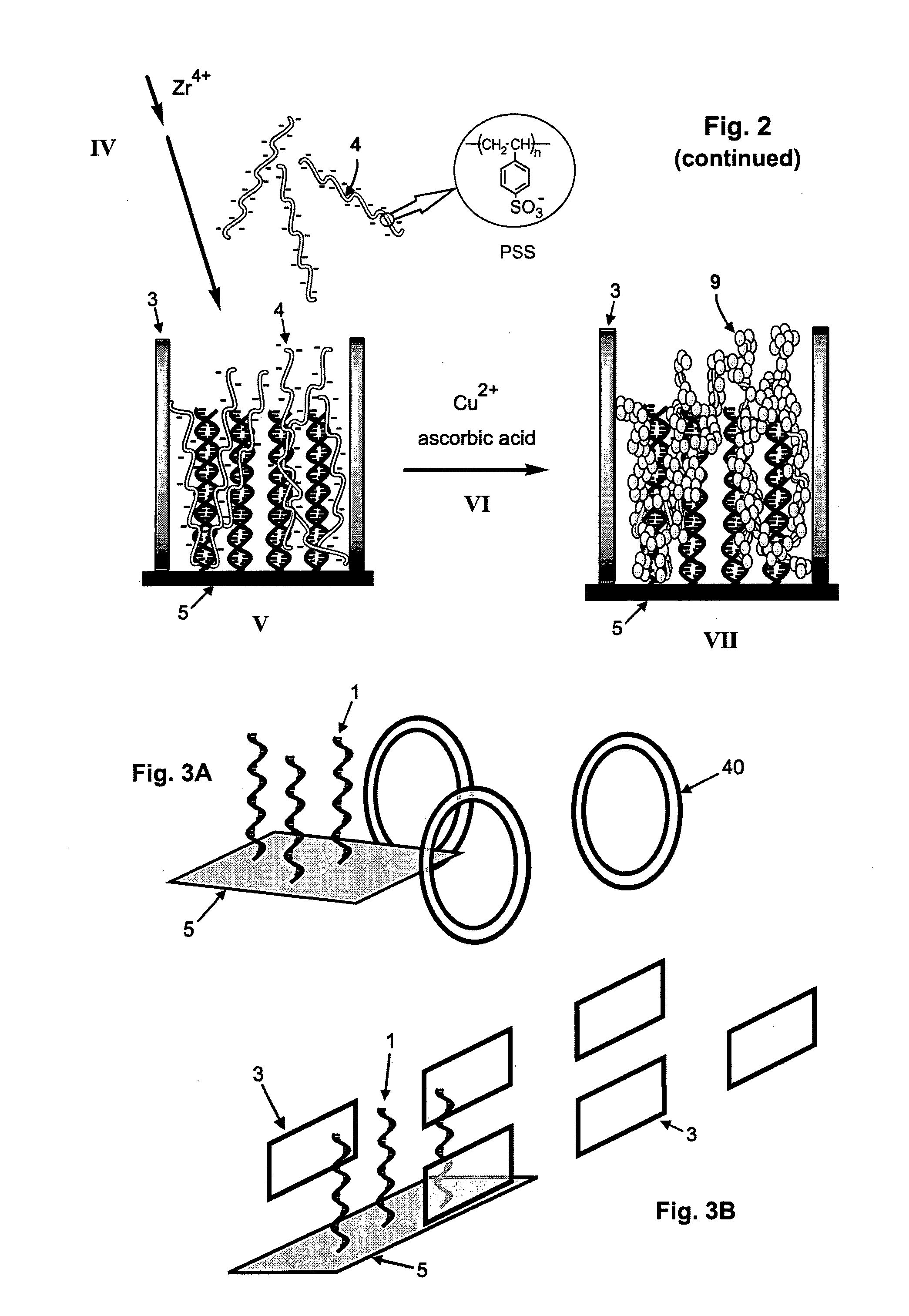Method of electrically detecting a nucleic acid molecule
a nucleic acid molecule and electrical detection technology, applied in the field of electrical detection of nucleic acid molecules, can solve the problems of high cost, high labor intensity, and low sensitivity of current electrical detection approaches, and achieve the effects of reducing labor intensity, reducing labor intensity, and reducing the cost of operation
- Summary
- Abstract
- Description
- Claims
- Application Information
AI Technical Summary
Benefits of technology
Problems solved by technology
Method used
Image
Examples
Embodiment Construction
[0017]The present invention provides a method of the electrically detecting a nucleic acid molecule. As used herein, the term ‘detection’, ‘detecting’ or ‘detect’ refers broadly to measurements which provide an indication of the presence or absence, either qualitatively or quantitatively, of an analyte. Accordingly, the term encompasses quantitative measurements of the concentration of an analyte nucleic acid molecule in a sample, as well as qualitative measurements in which for instance different types of analyte molecules in a given sample are identified, or, as a further example, the behaviour of a particular analyte molecule in a given environment is observed. The term ‘quantification’ refers solely to quantitative measurements of the amount, e.g. the concentration, of an analyte molecule.
[0018]The term “nucleic acid molecule” as used herein refers to any nucleic acid in any possible configuration, such as single stranded, double stranded or a combination thereof. Nucleic acids ...
PUM
 Login to View More
Login to View More Abstract
Description
Claims
Application Information
 Login to View More
Login to View More - R&D
- Intellectual Property
- Life Sciences
- Materials
- Tech Scout
- Unparalleled Data Quality
- Higher Quality Content
- 60% Fewer Hallucinations
Browse by: Latest US Patents, China's latest patents, Technical Efficacy Thesaurus, Application Domain, Technology Topic, Popular Technical Reports.
© 2025 PatSnap. All rights reserved.Legal|Privacy policy|Modern Slavery Act Transparency Statement|Sitemap|About US| Contact US: help@patsnap.com



